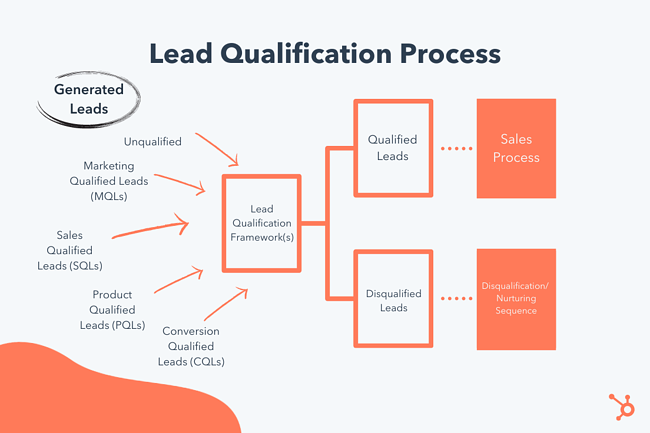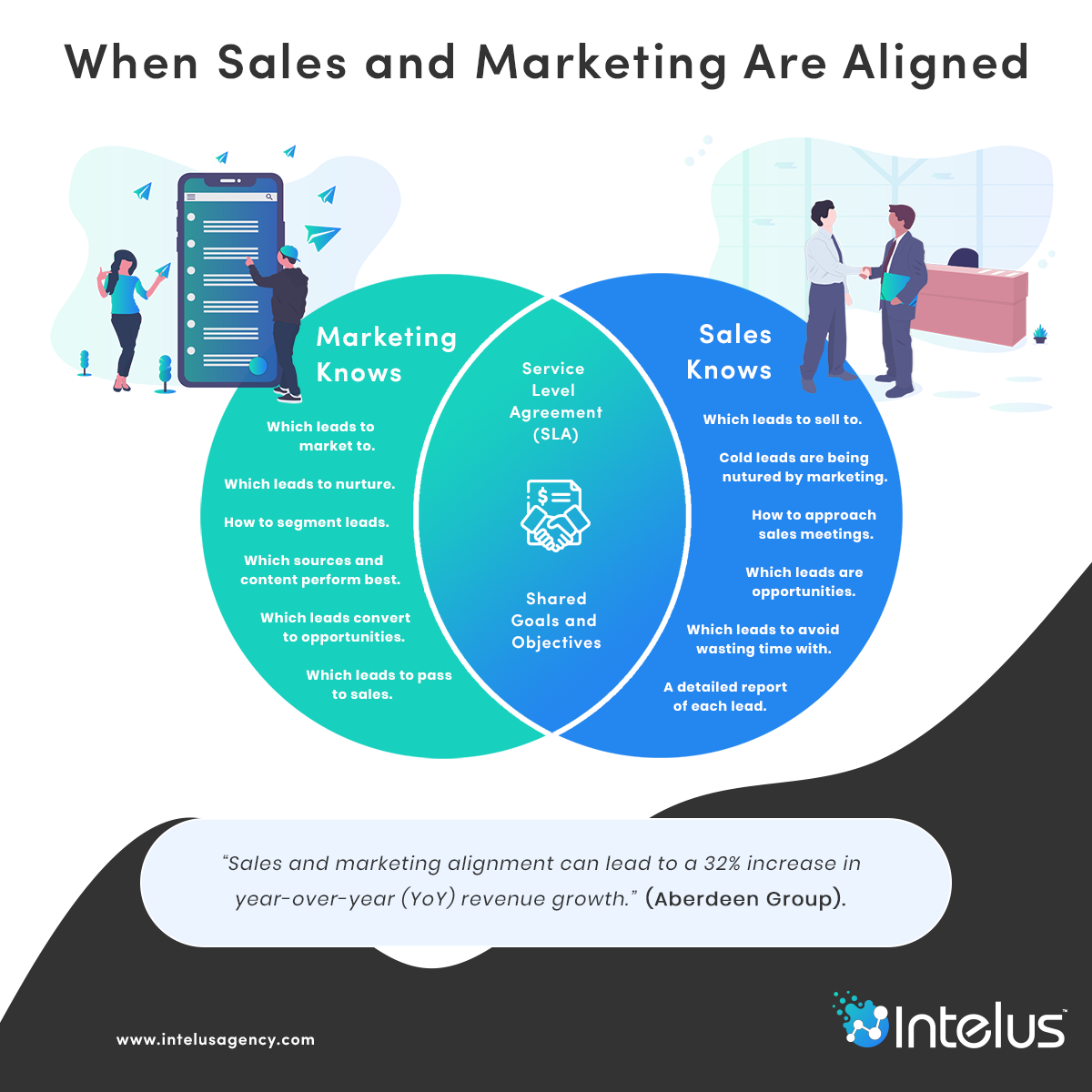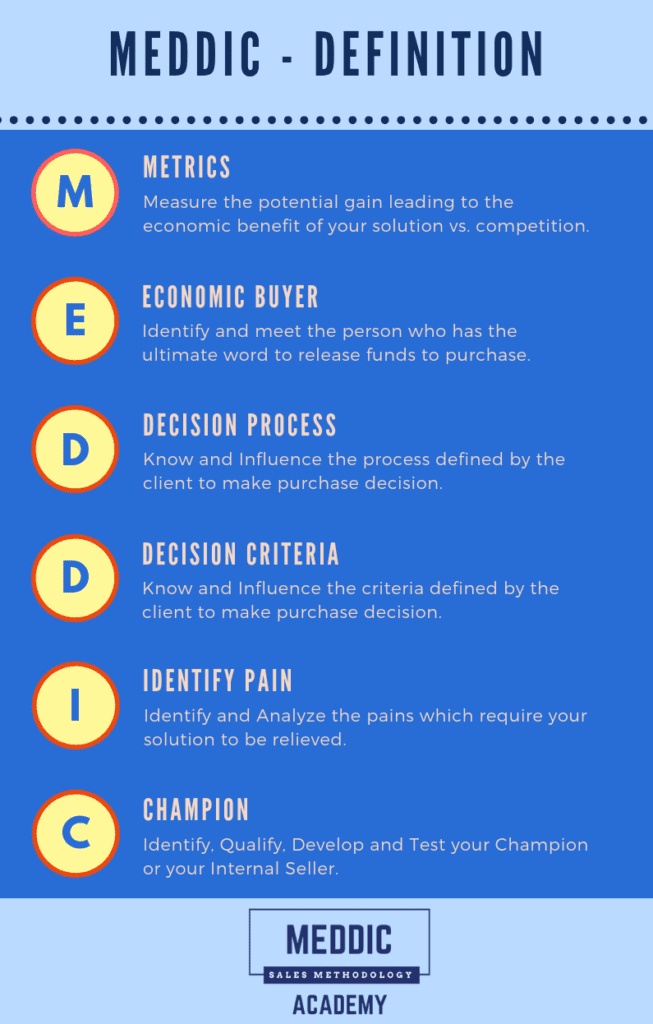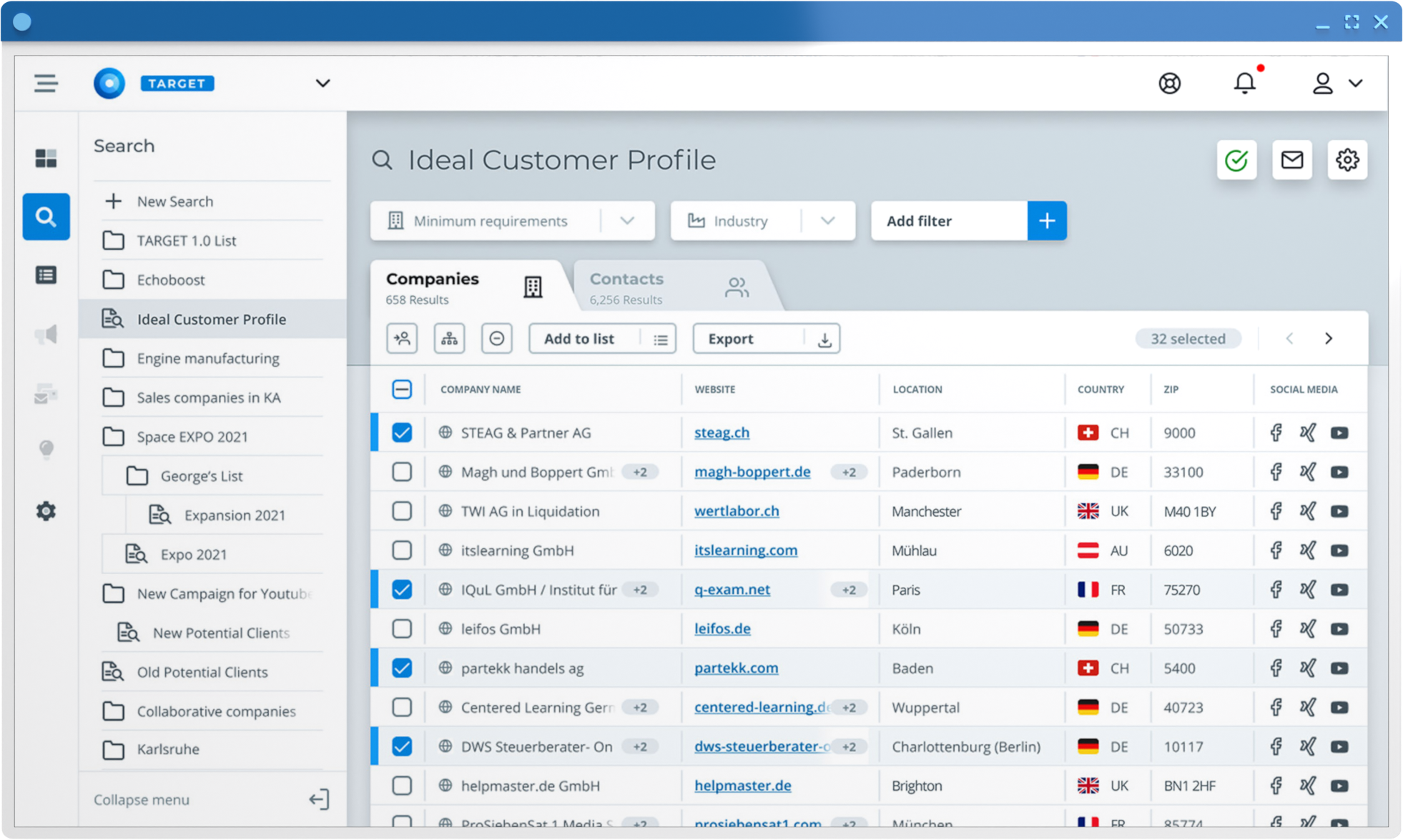It shouldn’t be a shock, but not everybody in your pipeline is ready to buy. Statistics show that 79% of marketing leads will not advance to sales, which means you could be wasting precious time and resources.
Hence, identifying and nurturing B2B leads that are a good fit for your B2B company is more important than ever. It´s in fact a crucial part of your B2B sales.
But here comes the dilemma: quantity vs. quality. And while more seems tempting, fewer but higher-quality B2B leads should be your golden standard. In fact, consider generating high-quality B2B leads as the most important part of your lead generation process.
This could include, apart many other things, tailor your marketing campaigns to your target audience a.k.a. decision-makers for your specific solution. After all, you don’t want your sales reps to talk to people from companies that don’t intend to buy from you in the first place. You want to chase leads most likely to fill up your sales pipeline and convert into loyal customers, right?
So, if you’re looking to learn about the best practices and effective ways to qualify your B2B leads, make sure to stick around until the end of this article.
What Is Lead Qualification in B2B?
Lead qualification (or sales qualification) in B2B is the process of analyzing if a prospect matches your ideal customer profile (ICP) and has the potential to convert into a long-term and successful customer for the years to come.
Sales qualification is an integral part of the sales funnel, as it allows you to collate essential information about your leads and identify the most promising ones. At first, B2B leads float into your funnel, ideally attracted by organic or paid marketing tactics. After that, you must decide whether your sales team should invest time and energy into an outreach—be it via phone, LinkedIn or other.
Lead qualification therefore is between lead generation and lead nurturing. At the end of your lead qualification process is the decision whether to keep or trash that specific lead.
Often, lead qualification is mentioned in the same breath as lead nurturing. If you’re in B2B sales, consider a deep dive into both topics to optimize your lead process when it comes to new leads in B2B.
Why Lead Qualification in B2B Is Important
Without proper lead qualification, your business would be shooting in the dark—and you would waste time in the long run. Why should your sales team run after a company that doesn’t really need your product? Or why should they prepare a long sales call, just to find out the company doesn’t fit your solution or the decision-maker already said “no” to a purchase?
Closing a deal is your ultimate goal, but this opportunity doesn’t come by as often as you think.
Studies reveal that:
“92% of firms, marketers and sales professionals give up after the fourth touchpoint, yet 80% of prospects say no four times before saying yes.”
However, you can prevent this by collecting relevant information about your B2B leads and properly qualifying them.
There are, of course, even more convincing reasons why B2B lead qualification matters. These include:
- Early qualification of leads allows your marketing and sales team to focus their energy and time on prospects with a higher propensity to purchase your product.
- It helps you prioritize high-value leads that will bring the most business and shorten sales cycles.
- Lead qualification uncovers customer pain points, challenges, and needs, enabling you to enhance your product.
- It helps you deliver a more personalized approach when communicating with prospects.
Lead Qualification Glossary (MQL, SQL, PQL)
Now that we understand the importance of B2B lead qualification, we need to delve deeper into the different buckets your B2B leads can be assigned.
Lead profiling allows companies to determine the various stages of the sales pipeline. Therefore, we’ve got several names for different types of leads.
Ready for a bit of technical jargon and acronyms? Don’t worry, it’s not that complicated!

Source: Hubspot
What is an MQL (Marketing Qualified Lead)?
At the top of the funnel, we usually find the so-called no-filter leads—names captured through newsletter sign-ups or white paper downloads on your website.
A Marketing Qualified Lead on the other hand is considered a lead that has a high probability of becoming your next customer. For example, there will be people claiming a test version of your tool, visiting your website, attending webinars, filling out lead forms in general, or speak with you at a trade fairs —this shows you their interest first of all. But if they fit your ICP and buyer persona afterwards, they are an MQL. The magical combination is interest plus ICP fit which in the end results in a high possibility of these leads to become customers.
MQLs provided by your B2B marketing usually occupy the middle of the funnel. This means they’re usually curious about your product or service and interact with your marketing on different channels.
An MQL is handed over by your marketing team to your sales squad.
What is an SQL (Sales Qualified Lead)?
Ideally, an MQL becomes an SQL. A Sales Qualified Lead is a company that has not only shown great interest in your solution but has also signaled their willingness to buy in one way or another.
So, an SQL has a real need for your product and shows it! Your sales team can classify the lead as “sales-qualified” after they have contacted that lead, for instance by phone. Once verified as a potential customer, sales can mark this lead as an SQL.
If an MQL reaches sales but doesn’t respond to any of your salespeople’s efforts to get in touch, it won’t reach the status of an SQL.
What is an PQL (Product Qualified Lead)?
A PQL is a lead that has shown a strong interest in your solution after extracting value through a free trial or other first-hand experience with your product.
How Does a Sensible B2B Lead Qualification Process Look Like?
The success of lead qualification boils down to having an effective workflow, clear criteria, and complete data set. Lead qualification should start with you having a clear ideal customer profile.
Then, your marketing team is responsible for setting up sensible strategies to convert companies that fit your ICP. Top your marketing activities with marketing automation software to be in the loop concerning your prospects’ activities and interests so you can adjust your contents.
Leads will start to hit your funnel, so you could make us of prospecting and lead generation tools to further receive high-quality leads. Both the leads from your marketing activities and those from other tools need to be qualified to make sure they develop into an MQL to hand over to sales.
Nevertheless, the basic information you need at this stage includes:
- Name
- Job Position
- Company
- Email Adress.
Once you have a complete list of qualified leads with contact details, you can start reaching out to them to determine their fit. Or you nurture these leads before with additional information your sales might need to finetune their outreach.
Ideally, you should also be using one of the lead qualification frameworks.
Note: Just because some leads didn’t qualify this time, it doesn’t mean a dead end for your business. Maybe their company size doesn’t fit yet or they don’t have a current pain. Keep them in your communications loop (and your CRM!) and liaise with them at a later time.
It is also important to remember that the lead qualification process shouldn’t be static; it should evolve with market conditions and per unique companies’ circumstances. Optimize your processes step-by-step where possible.
Who Is Responsible for Lead Qualification?
You might be asking who is ultimately responsible for B2B lead qualification. While traditionally it has been sales, it’s a team effort nowadays.

Source: Intelus Agency
Indeed, the pre-sales, marketing, and sales teams must work in tandem to stand the best chances of converting the prospects. In fact, sales and marketing alignment increases the chances of closing the deals by 67%. Make sure all the teams are aligned when it comes to your buyer persona and ideal customer profile.
How does that work in practice?
Usually, marketing starts collecting leads with organic or paid marketing campaigns—ads, blog content, webinars and more. Concentrate on an ABM strategy if you want to generate leads that really fit your ICP.
Afterwards, when these marketing campaigns have generated leads (or you invested in a prospecting tool to provide you with B2B leads), the pre-sales team is usually in charge to take a closer look at these companies. Do they fit your ICP? Then let’s nurture and qualify them!
Afterwards, pre-sales hands over its MQLs to the sales team.
3 Lead Qualification Techniques
There are numerous lead qualification methods and frameworks that you can use to determine how likely a prospect is to convert. They all work on the basis of certain metrics that make help you determine whether a lead should be qualified or not.
Here are the three most popular ones.
What is the BANT Sales Framework?
Introduced in the 1960s, BANT is a four-dimensional lead qualification framework widely used across various industries. BANT stands for
B - budget (Does your prospect have sufficient budget to purchase your solution?)
A - authority (Who makes the final decision in the sales cycle within the organization? Identify the decision-makers!)
N - need (Does the solution you offer address the prospect's pain points and needs?)
T - timeline (What is your lead’s timeline for buying? How’s their process for purchase decisions?)
Companies can use the BANT approach to gather relevant information about their prospects and distinguish between qualified and unqualified leads. So, if your prospects give positive answers to at least three out of four questions, they’re considered qualified.
Pro tip: With certain prospecting tools you can answer these questions by yourself because you can see important financial figures, sales triggers that indicate a current demand or other metrics about relevant companies.
However, this lead qualification framework is often criticized for being too rigid due to its strict criteria over the ‘timeline’ dimension. Just because your lead is not warm enough at this point, you shouldn’t reject them altogether. Instead, you should keep them in your pipeline and approach them whenever they’re ready.
What is CHAMP Sales?
CHAMP Sales, an acronym for challenges, authority, money, and prioritization, is another sales qualification technique where the lead’s challenges are given a top priority when considering their fit.
Sales reps can use this framework for diving into the prospect’s priorities and problems, determining how the product can help address them. With the enhanced understanding of the prospect, sales can identify unique opportunities to help the customer.
Conversely, this methodology prioritizes customers’ business problems over budgets, which can be problematic if you sell a high-end product with a premium price tag. So, this could be pretty challenging to adapt to small businesses or start-ups, too.
What is MEDDIC?
Finally, MEDDIC is a lead qualification framework that sales teams can use to qualify their prospects.
The methodology’s key advantage is its intuitive ‘check-list’ design, which allows you to obtain information corresponding to each stage of the MEDDIC sales process.
Furthermore, this sales framework is comprehensive; thus, it’s useful for industries and businesses that sell products with high average sales prices and want to disqualify bad-fit leads early on.
On the flip side, due to the thoroughness and in-depth questionnaire, MEDDIC can unnecessarily prolong your lead qualification process and require additional hours from your sales reps.

Source: Meddic.academy
Tools for Lead Qualification in B2B
You probably think it’s all well and good. There are many proven methods and tactics to qualify leads, but they’re lengthy and rely on manual data collection.
The good news is that with the help of lead qualification and prospecting tools such as Dealfront you can speed up and sharpen your lead qualification process without spending countless looking for the best-fit.
Let’s see one by one how these tools can help you!
Dealfront
Dealfront is a sales intelligence tool that can skyrocket your prospecting and lead qualification as no other solution does.
Thanks to Dealfront’s intelligent company and contact database, you can effortlessly obtain deep company data such as demographics, financial data, size or location of a company. Many more AI features such as sales trigger events or B2B lookalikes lift your prospecting to the next level.

Prospecting with Dealfront
Benefit from 300+ filters and 30 unique sales trigger like change in management, expansion, job cuts and many more to flood your pipeline with high-quality leads!
With Dealfront, your marketing, pre-sales and sales team will speed up their lead qualification as well as the lead nurturing process and forget about time-consuming and notorious manual methods.
The solution also provides a website visitor identification software that tells you which companies were on your company’s website and what content they are looking at. The visitors are registered as leads, prioritized based on what they do on your website, and then passed down your sales pipeline.
Your sales team sees exactly which leads are the most interested as Leadfeeder prioritizes these at the top of the list. Prospecting can’t get any easier!
Hubspot
Do you think HubSpot is just simply a CRM? Think again.
HubSpot enables you not only to manage your B2B data in a cloud but also supports you in sales and marketing. Qualify leads and finetune your content alongside your buyer’s journey easier than ever before. HubSpot helps you convince your prospects in their decision-making process. Why? Because it helps you organize your sales and marketing steps in one single platform. Account Based Marketing (ABM), lead tracking, marketing automation, pipeline management...you name it!
Conclusion: Learn How to Qualify Leads in B2B Properly
Mastering the lead qualification process can bring tangible benefits to your business. If your sales pipeline is full of bad-fit leads, your sales team is squandering resources and time on companies that are neither interested in your product nor need it.
Your revenue is directly dependent on the leads that enter your sales pipeline. Your goal is to acquire loyal clients who will drive repeat sales, purchase product upgrades, and happily refer your business.
Using tried and tested lead qualification techniques while tapping into the power of automation solutions will allow you to increase the value of your leads and pave the way for sustainable profits.
